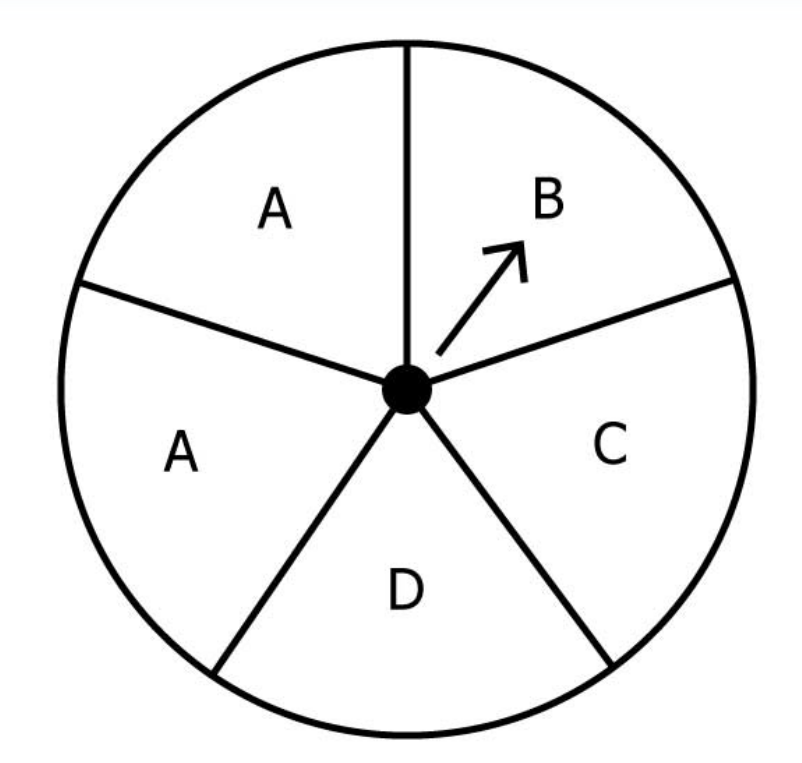An experiment has 10 equally likely outcomes. Let A and B be two non-empty events of the experiment. If A consists of 4 outcomes, the number of outcomes that B must have so that A and B are independent, is (A) 2, 4 or 8 (B) 3, 6 or 9
2,4 or 8
3,6, or 9
4 or 8
5 or 10.
The correct Answer is:D
We have, P(A)=410=25
Suppose B has n outcomes. Then, P(B)=n10,0<n<10.
Since A and B are independent events.
∴P(A∩B)=P(A)P(B)
⇒P(A∩B)=25×n10=2n/510
⇒2n5 is an integer between 0 ans 10
⇒n5 is an integer between 0 and 5
⇒n=5,10.
Topper's Solved these Questions
- PROBABILITY BOOK - OBJECTIVE RD SHARMACHAPTER - PROBABILITY EXERCISE - Section- II (Assertion -Reason Types MCQs)
15 Videos
- PROBABILITY BOOK - OBJECTIVE RD SHARMACHAPTER - PROBABILITY EXERCISE - Section I - Mcqs
94 Videos
- PROBABILITY BOOK - OBJECTIVE RD SHARMACHAPTER - PROBABILITY EXERCISE - Chapter Test
45 Videos
- PERMUTATIONS AND COMBINATIONSBOOK - OBJECTIVE RD SHARMACHAPTER - PERMUTATIONS AND COMBINATIONSEXERCISE - Chapter Test
60 Videos
- QUADRATIC EXPRESSIONS AND EQUATIONS BOOK - OBJECTIVE RD SHARMACHAPTER - QUADRATIC EXPRESSIONS AND EQUATIONS EXERCISE - Chapter Test
50 Videos
Similar Questions
If A and B be two events such that P(A)=1/4, P(B)=1/3 and P(A∪B)=1/2 show that A and B are independent events.
View SolutionA coin is tossed twice and all 4 outcomes are equally likely .Let A be the event that first throw results in a head and B be the event that second throw results in a tail , then show that the events A and B are independent .
View Solution
Knowledge Check
An experiment has 10 equally likely outcomes. Let A and B be two non-empty events of the experiment. If A consists of 4 outcomes, the number of outcomes that B must have so that A and B are independent, is equal to
A2,4 or 8B3,6, or 9C4 or 8D5 or 10Let A and B be two sets such that A×B consists of 6 elements. If three elements of A×B are (1,4),(2,6) and (3,6), then
A(A×B)=(A×B)B(A×B)≠(A×B)CA×B={(1,4),(1,6),(2,4)}DNone of the aboveLet A and B be independent events such that P(A) =0.6 and P(B ) =0.4.
find P(A∩B)A0.24B0.76C0.56Dnone of these
List the outcomes you can see in these experiments.
(a) Spinning a wheel
(b) Tossing two coins together

View SolutionLet AandB are events of an experiment and P(A)=1/4,P(A∪B)=1/2, then value of P(B/Ac) is 2/3 b. 1/3 c. 5/6 d. 1/2
View SolutionTwo dice are thrown together. Let A be the event getting 6 on the first die and B the event getting 2 on the second die. Are the events A and B independent?
View SolutionLet A and B be two events such that P(A)=0.3 and P(A∪B)=0.8. If A and B are independent events, then P(B)=
View SolutionLet A and B be independent events such that P(A) =0.6 and P(B ) =0.4.
find P(A∩B)
View Solution
